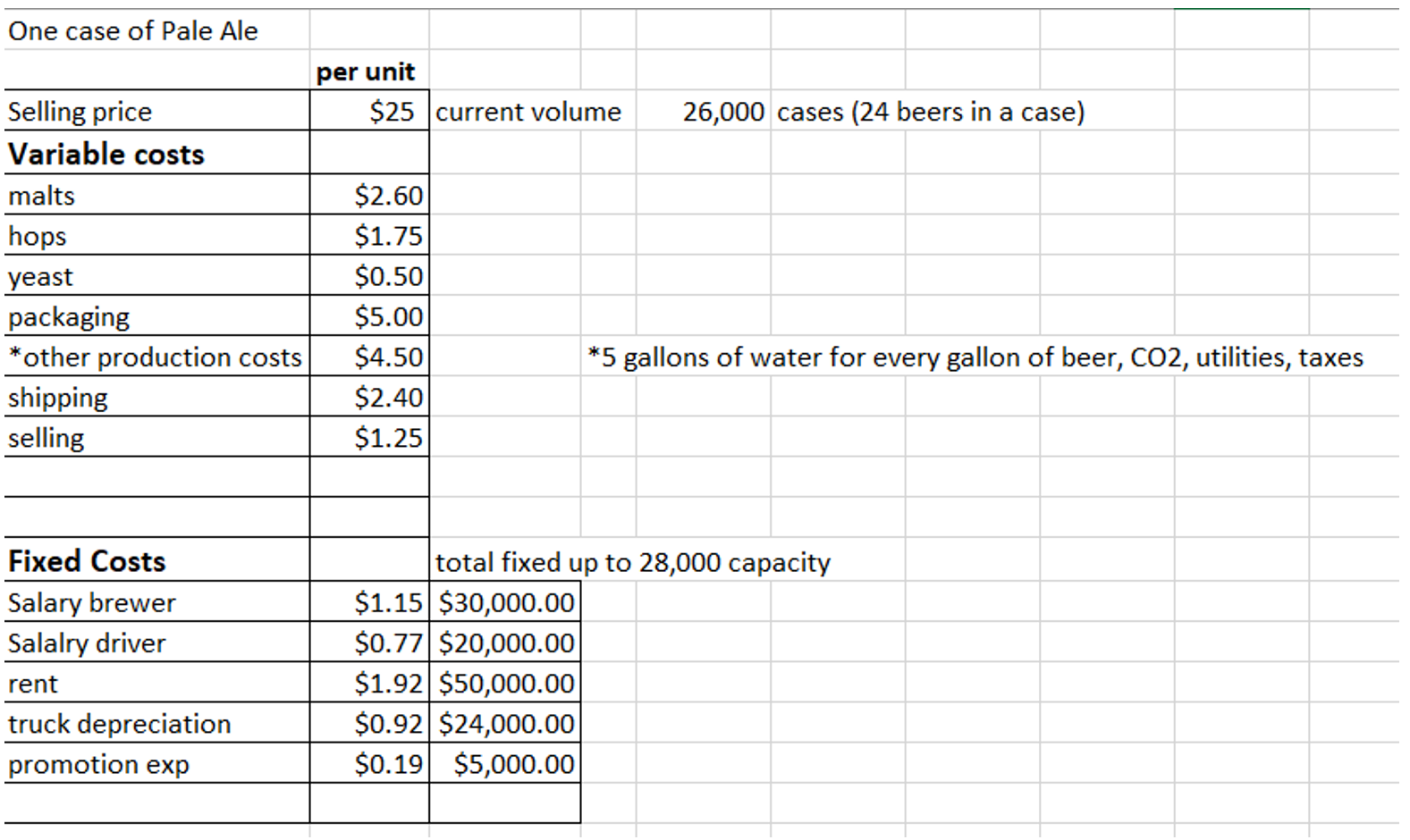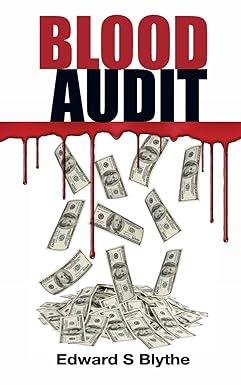Question
The Town Brewery is a microbrewery located in the suburbs just north west of Boston, and local beer enthusiasts are devoted and passionate for their
The Town Brewery is a microbrewery located in the suburbs just north west of Boston, and local beer enthusiasts are devoted and passionate for their unique and hearty ales. Founded in 1993, The Town Brewery originally became popular for its American Pale Ale, a crafted English ale, distinguished by its use of American ingredients of Cascade and Nugget hops. Pale amber in color, its malty character and crisp clean hop finish is what distinguishes this ale from the others.
A microbrewery is a small brewery, which is known for producing craft beer. By definition, a microbrewery is a brewery that produces less than 15,000 barrels of beer a year. Over the past ten years, the number of microbreweries has grown considerably, as beer lovers continue to search for their perfect taste.
The production process:
The production of beer is a simple process that transforms malts, hops and yeast into beer. First the malts are selected. The types of malts will determine the flavor, color and style of the beer. The malts are grinded and mixed with hot water to make wort. Wort is basically a sweet unfermented beer, and will be the food the yeast will need to make alcohol. Next, for additional flavor, the wort is boiled and the hops are added. After cooling, adding yeast will be the start of the fermenting process. The beer will then be stored in fermenting tanks for about two weeks, at which time it will be carbonated and packaged.
About the data:
The variable selling expenses relate to the commission paid to the sales staff when they sell a case of beer. The commission is paid when the sales person successfully makes a sale either by phone or from a sales visit. Once the sale is made, the product is shipped to the customer. The variable delivery costs relates to the costs of delivering the case of beer.
The following data was for an entire year of operations and the decisions presented were all decisions that were actually considered by the brewery. Please use only relevant information when completing the case.

#1 A local not for profit has asked us for a special price for our beer. We would love to do something nice for our community but we cant afford to lose any money. They would like 20 cases and have agreed to pick the beer up at the brewery. Because our sales staff is not involved in this order, there will be no variable selling costs. What price can we charge if we want to break even. (SPECIAL ORDER)
#2 It seems like the summer is not a good time for our richer craft beers. Our sales have been dropping to only 40% of our normal volume. Consequently, we are considering closing the brewery for June, July and August. If we close the brewery, the rent will continue at the regular rate, but the brewer likes to go to on vacation and agreed forgo 30% of his salary for the three months. The driver will be temporarily laid off for two of the three months, but all other fixed expenses will remain unchanged. After the three months, the brewery will be back at its normal sales volume. If we close the brewery for the three summer months, will net income go up or down and by how much? (DROP OR KEEP A SEGMENT)
#3 We just made what we thought was another fabulous barrel of beer. We bottled, packaged, and shipped it to customers only to find out that we put too much CO2 in the bottles. Although the beer is good, when the customers open them, they are very foamy! Our customers are not happy and want a refund. They can either throw away the remaining cases of beer, or have us pick up the remaining cases. If we pick up the beer, we can sell the cases as is at the brewery as seconds. Selling at the brewery would mean that our sales people are not involved, so we would not incur any additional selling expenses. It also means that nothing will be repackaged. What costs are relevant to set a minimum selling price for the beer if we sell it from the Brewery. (RELEVANT COSTS) (SUNK COSTS)
#4 A brewery in Western Massachusetts has extra capacity and offers to make and package our beer for us. They plan on charging us $13 per case. We will still sell and deliver the beer ourselves. If we accept their offer, we will only need to rent half of our facility to store the beer so rent will continue at 60%. The Brewer will become part time and his salary will decrease by 30%. Since we will no longer need our equipment, another brewer has offered to rent our equipment for $10,000 a year. If we accept their offer, will our net income go up or down and by how much? What price per case of beer will the brewery have to offer to make us indifferent to continuing to make the beer ourselves or contract the beer from this outside source? (MAKE OR BUY)
#5 Due to the increase in Micro Breweries, the cascade hops that go into our Pale Ale and IPA are on back order. We currently have a back order for 70 cases of pale ale and 50 cases of IPA. The pale ale sells for $25 a case with variable costs of $18 per case and the IPA sells for $30 per case with variable costs of $20 per case. The Pale Ale requires 2 OZ of Cascade hops while the IPA requires 6 OZ of hopes. The brewery currently only has 350 ounces of cascade hops on hand. How many cases of each product should the brewery make? (CONSTRAINED RESOURCES)
#6 Our sales staff believes that if we spend $1,000 on t-shirts, bottle openers and glasses, then we can expect to sell another 150 cases of beer. Do you recommend we do this advertising campaign? How much will Net income go up, or down? (INCREMENTAL ANALYSIS)
#7 For the purpose of financial accounting reporting, how would you value one case of beer on the Balance sheet? Is this value your only consideration when setting the price in #1? Why?
#8 Assume that the brewery sells both pale ale and IPA cases. (There are no additional fixed costs incurred by selling the IPA.) The pale ale sells for $25 a case with variable costs of $18 per case and the IPA sells for $30 per case with variable costs of $20 per case. The sales staff have noted that for every 5 cases of pale ale, we are selling 2 cases of IPA. Based on this information, how many cases of beer will we need to sell to break even? How many of these cases will be pale ale, and how many will be IPA? What is the break even in sales revenue?
One case of Pale Ale per unit Selling price $25 current volume 26,000 cases (24 beers in a case) Variable costs malts $2.60 hops $1.75 yeast $0.50 packaging $5.00 *other production costs $4.50 *5 gallons of water for every gallon of beer, CO2, utilities, taxes shipping $2.40 selling $1.25 Fixed Costs Salary brewer Salalry driver rent truck depreciation promotion exp total fixed up to 28,000 capacity $1.15 $30,000.00 $0.77 $20,000.00 $1.92 $50,000.00 $0.92 $24,000.00 $0.19 $5,000.00 One case of Pale Ale per unit Selling price $25 current volume 26,000 cases (24 beers in a case) Variable costs malts $2.60 hops $1.75 yeast $0.50 packaging $5.00 *other production costs $4.50 *5 gallons of water for every gallon of beer, CO2, utilities, taxes shipping $2.40 selling $1.25 Fixed Costs Salary brewer Salalry driver rent truck depreciation promotion exp total fixed up to 28,000 capacity $1.15 $30,000.00 $0.77 $20,000.00 $1.92 $50,000.00 $0.92 $24,000.00 $0.19 $5,000.00Step by Step Solution
There are 3 Steps involved in it
Step: 1

Get Instant Access to Expert-Tailored Solutions
See step-by-step solutions with expert insights and AI powered tools for academic success
Step: 2

Step: 3

Ace Your Homework with AI
Get the answers you need in no time with our AI-driven, step-by-step assistance
Get Started


